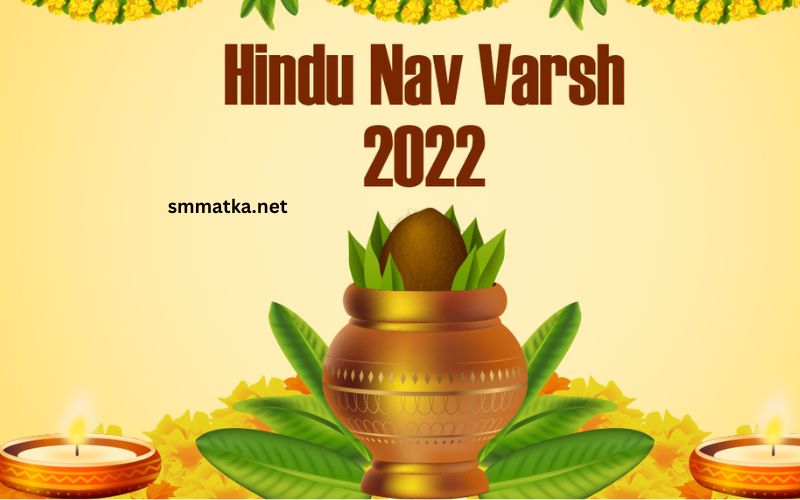Hindu Nav Varsh, also known as Hindu New Year, is a significant festival celebrated by millions of Hindus across the globe. This auspicious occasion marks the beginning of a new year according to the traditional Hindu calendar. The celebration is infused with vibrant rituals, customs, and traditions that vary regionally but uniformly embody joy, renewal, and reverence for divine blessings. In 2022, Hindu Nav Varsh took on a special significance as people across different communities welcomed the new year with renewed hope and a plethora of colorful images and decorations that captured the essence of the festivities.
The Significance of Hindu Nav Varsh
Hindu Nav Varsh is celebrated at different times of the year depending on the regional calendars followed. Some of the most notable celebrations include:
- Gudi Padwa in Maharashtra and Goa.
- Ugadi in Andhra Pradesh, Telangana, and Karnataka.
- Vishu in Kerala.
- Baisakhi in Punjab.
- Puthandu in Tamil Nadu.
- Pohela Boishakh in Bengal.
Each of these regional celebrations aligns with the lunar or solar cycles and marks the advent of spring, symbolizing renewal, prosperity, and new beginnings.
Traditional Practices and Customs
Hindu Nav Varsh is marked by a variety of rituals and customs that reflect the cultural diversity of India. Common practices include:
- Cleaning and Decorating Homes: It is customary to thoroughly clean homes and decorate them with rangoli (intricate designs made with colored powders) and flowers. This act symbolizes the removal of negativity and the invitation of positive energy.
- Raising the Gudi: In Maharashtra, people erect a Gudi, a bright yellow cloth adorned with garlands, mango leaves, and neem leaves, topped with an upturned silver or copper pot. The Gudi is believed to ward off evil and bring good fortune.
- Special Feasts: Elaborate meals are prepared, featuring traditional dishes specific to each region. For example, in Andhra Pradesh and Karnataka, dishes like Ugadi Pachadi—a mix of six tastes symbolizing different emotions of life—are prepared.
- Religious Observances: Devotees visit temples, perform pujas (worship ceremonies), and recite prayers to seek blessings for the coming year.
Visual Celebrations: The Role of Images
Images play a pivotal role in Hindu Nav Varsh celebrations. From vibrant decorations to elaborate pujas, the visual elements capture the spirit of the festival. In 2022, images shared across social media and other platforms provided a glimpse into these diverse celebrations, helping to spread joy and cultural understanding.
Rangoli: The Art of Welcoming
Rangoli designs are one of the most visually striking aspects of Hindu Nav Varsh. These intricate patterns are created using colored powders, rice, sand, or flower petals. Each design is unique, often featuring symbols like flowers, peacocks, and religious motifs. In 2022, social media was flooded with images of stunning rangolis, showcasing the artistic talent and cultural heritage of India.
Temples and Rituals
Photographs of temples adorned with lights and flowers captured the grandeur of Hindu Nav Varsh. Images of devotees participating in rituals, offering prayers, and seeking blessings provided a window into the deep spiritual significance of the festival. The temples themselves, with their architectural splendor, became focal points of the celebrations.
Festive Attire
Traditional attire is another highlight of Hindu Nav Varsh. People dress in their finest clothes, often in bright and auspicious colors like red, yellow, and green. Women adorn themselves with sarees, jewelry, and flowers, while men wear dhotis or kurta-pajamas. The vibrant attire not only adds to the festive atmosphere but also reflects cultural pride.
The Digital Celebration
In 2022, the digital celebration of Hindu Nav Varsh saw a significant surge, driven by the ongoing COVID-19 pandemic, which limited large gatherings. People turned to social media platforms to share their celebrations, creating a virtual community that transcended geographical boundaries.
Social Media Platforms
Platforms like Instagram, Facebook, and Twitter were filled with images and videos of Hindu Nav Varsh celebrations. Hashtags such as #HinduNewYear2022, #GudiPadwa2022, and #Ugadi2022 helped people connect, share their traditions, and spread festive cheer. Virtual greetings, digital rangoli designs, and live-streamed pujas allowed people to participate in the festivities from the safety of their homes.
Digital Art and Greetings
Digital art became a popular medium for expressing festive greetings. Artists created beautiful illustrations and animations that depicted various aspects of Hindu Nav Varsh. These digital creations were widely shared and used as e-cards, providing a modern twist to traditional celebrations.
The Impact of Visuals on Cultural Preservation
The widespread sharing of images and videos during Hindu Nav Varsh 2022 played a crucial role in cultural preservation and education. For younger generations and the global diaspora, these visuals offered a way to stay connected with their heritage. They served as educational tools, helping people understand and appreciate the rich traditions and rituals associated with Hindu Nav Varsh.
Education and Awareness
Educational institutions and cultural organizations leveraged these visuals to conduct virtual workshops and seminars on the significance of Hindu Nav Varsh. These initiatives helped raise awareness about the cultural diversity of India and the historical context of the festival.
Preservation of Traditions
By documenting and sharing images of rituals, decorations, and traditional attire, communities contributed to the preservation of their cultural heritage. These visual records serve as an archive for future generations, ensuring that the essence of Hindu Nav Varsh is not lost.
Regional Highlights of Hindu Nav Varsh 2022
Each region’s unique way of celebrating Hindu Nav Varsh adds to the festival’s rich tapestry. Here are some regional highlights from 2022:
Maharashtra: Gudi Padwa
In Maharashtra, Gudi Padwa was celebrated with great enthusiasm. Images of beautifully adorned Gudis against the backdrop of vibrant rangolis and flower decorations were widely shared. Traditional processions, though subdued due to pandemic restrictions, still featured prominently in photographs and videos.
Andhra Pradesh and Karnataka: Ugadi
Ugadi celebrations in Andhra Pradesh and Karnataka were marked by the preparation of Ugadi Pachadi, which was extensively photographed and shared online. Temples and homes decorated with mango leaves and flowers, as well as people dressed in traditional attire, provided a colorful glimpse into the festivities.
Punjab: Baisakhi
Baisakhi in Punjab is both a harvest festival and the Sikh New Year. Images of energetic Bhangra and Gidda dance performances, golden wheat fields, and gurdwaras (Sikh temples) illuminated with lights showcased the joy and cultural vibrancy of the celebration.
Kerala: Vishu
In Kerala, Vishu is celebrated with the Vishukkani—an arrangement of auspicious items viewed upon waking up. Images of beautifully arranged Vishukkani, featuring items like rice, fruits, flowers, and a mirror, captured the spiritual and aesthetic beauty of the festival.
Conclusion
Hindu Nav Varsh 2022 was a celebration of renewal, hope, and cultural richness. The images shared during this time not only highlighted the vibrant traditions and rituals but also played a vital role in connecting people and preserving cultural heritage. As the world continues to embrace digital platforms, the visual documentation of such festivals ensures that the essence and beauty of these ancient traditions are cherished and passed on to future generations.

